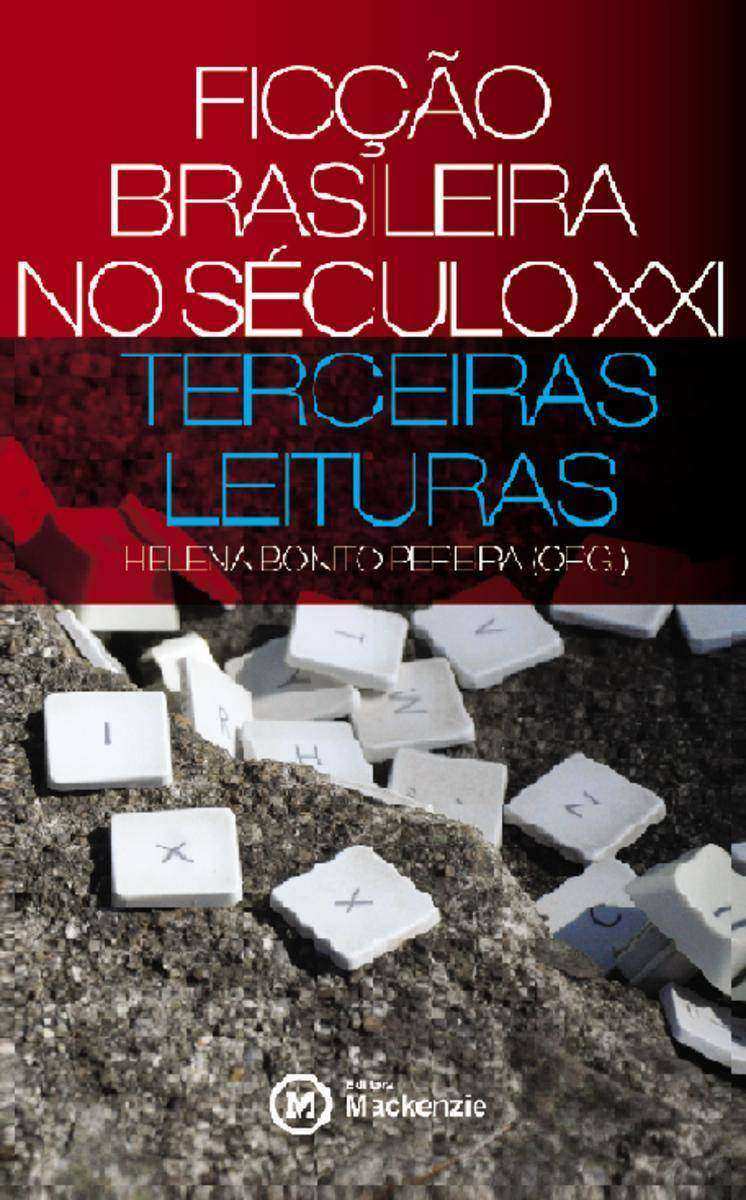
Fic??o brasileira no século XXI: terceiras leituras
¥0.01
n aceast carte vom vorbi despre acele boli, care ne fac s ne ntrebm: Oare triesc corect, oare am contiina curat, oare nu sunt prea gelos, prea invidios sau prea iritat“ Sursele i mecanismele acestor boli sunt asigurate de defecte ale sferei noastre spirituale i nu de factori externi. Aceste boli se numesc boli karmice. Cum s ne lecuim de acestea i s nvm s trim conform legilor i ritmurilor cosmice Cum s fim n armonie cu noi nine, cu lumea nconjurtoare, cum s avem succes i s devenim oameni sntoin aceast carte: predispoziia zodiacal la anumite boli; legtura dintre Lun i sntate; mecanismul apariiei i tratrii bolilor karmice; legtura dintre boli i strile negative; mbuntirea karmei i ndeprtarea cmpurilor energetice strine.

Сто рок?в боротьби
¥0.01
Esta publica??o é eminentemente didática e útil aos vários profissionais da área da saúde. A obra está organizada em duas partes. A primeira, dedicada à teoria da Psicologia da Saúde, visa dar ao leitor um panorama geral dos aspectos que embasam a compreens?o da Segunda parte do livro voltada aos trabalhos de pesquisa desenvolvidos pelos pesquisadores da Psicologia da Saúde, aqui reunidos.

The Worlds of Joe Shannon
¥4.58
Jung’a g?re i? dünyam?za y?nelik de ?e?itli yap?lar?m?z vard?r. Her insanda hem di?ili?e ait bir?davran???ve hissedi? yap?s?( ki buna “anima” ad?n? vermi?tir) hem de erkekli?e ait bir yap? (“animus”) vard?r. Ona g?re bu iki yap? aras?ndaki dengeye ait sorunlar cinsel kimlik bozukluklar?ndan,??ki?ilik?bozukluklar?na dek ?ok farkl? psikiyatrik bozukluklara yol a?abilmektedir.?Bunlar?n en alt?nda ise, “kendilik” dedi?imiz as?l bizim i?imizdeki??z?olarak dü?ünülebilecek olan, rüyalar?m?zda farkl?la?arak ortaya ??kan adeta yerkürenin merkezindeki ma?ma katman? gibi enerjik bir yap? vard?r. ????NDEK?LER ?Carl Gustav Jung’un Ya?am ?yküsü?B?R?NC? B?L?M:?JUNG PS?KOLOJ?S?NE G?R??ANAL?T?K PS?KOLOJ?Bilin? ve Bilin?d???n?n ??leviKi?ilik Kuram?Psikoterapi SüreciJung’un psikoloji-psikiyatri bilimine yapt??? katk?larBilincin ?ne ??k???Bilincin ??levleri??levlerin y?netimi:Psikolojik tipler &?Dünyaya y?nelik tutumlar:D??ad?nüklük??e d?nüklükBilin?d???: Ki?isel ve Kolektif Bilin?d???Bilin? ve bilin?d??? ili?kisi:Jung ve E?zamanl?l?kE?zamanl?l?k –Jung’un Ger?ekli?e Yan?t?G?LGE KAVRAMI VE JUNG.. ? ?K?NC? B?L?M: FREUD VE JUNG ARASINDAK? FARKLAR Edebiyat Konusunda Freud ve Jung'un Yakla??mlar?n?n K?yaslanmas?FREUD VE JUNG DA PS?KANAL?Z VE D?N..Edebiyat Konusunda Freud Ve Jung'un Yakla??mlar?n?n K?yaslanmas?PS?KANAL?Z VE D?NPS?KANAL?ZDE R?YA YORUMU FREUD VE JUNG.. ? ???NC? B?L?M: JUNG VE D?RT ARKET?P.. ? D?RD?NC? B?L?M: JUNG VE PS?KANAL?T?K KURAM JUNG PS?KOLOJ?S?NE A?T BAZI KAVRAMLARKollektif Bilin?alt?nda bulunan belli ba?l? arketipler:K???L???N GEL???M?YA?AM D?NEMLER???LEVLERR?YALAR VE S?MGELERJUNG TERAP?S?PS?KOTERAP?DE S?MGELER?N KULLANIMIR?YALAR VE S?MGELERR?YALAR VE YORUMLARELE?T?R?LER G?R??LERArketip Kavram? ve Marka Ki?ilikleriStratejik A??dan Marka Ki?ilikleriJung'a G?re Ki?ilik Yap?s?Ki?isel Bilin?alt? ? BE??NC? B?L?M: Analitik Psikoloji Temel ?lke ve Kavramlar CARL GUSTAV JUNG'da,?E?zamanl?l?k –Jung’un Ger?ekli?e Yan?t?TEOR?ArketiplerAnne ArketipiManaG?lgePersonaAnima ve animusDi?er arketipler?nsan akl?n?n dinamikleriBenlikE?zamanl?l?k ? ALTINCI B?L?M: JUNG ?ZER?NE KISA B?R ?NCELEME Arketip Kavramlar?Eril Arketipler:Di?il Arketipler:K?tüler:As?l Mesele:?Carl Gustav Jung ve Analitik Psikoloji (?zet ve Kar??la?t?rma) ? YED?NC? B?L?M: CARL GUSTAV JUNG VE PS?KOLOJ? YEN? B?R D?NEM “B?L?N?ALTININ ??Z?M?”Carl Jung'un Astroloji Hakk?ndaki?S?ylemleriJUNG’ DAN BAZI S?ZLER: ? SEK?Z?NC? B?L?M: SONU?LAR .. ? DOKUZUNCU B?L?M: JUNG PS?KOLOJ?S?NE A?T BAZI KAVRAMLAR K???L???N GEL???M??nsan akl?n?n dinamikleriBenlikE?zamanl?l?kHayvan Davran??lar?na Psikolojik Yakla??mlar?nsan Davran??lar?n?n Anla??lmas?nda Bir Yakla??m: Psikoanalitik KuramFreud ve Evrimsel Biyoloji: Psikanalitik Kuram'?n Ele?tirisiFELSEFEN?N PS?KANAL?Z ?ZER?NE ETK?LER?…B?L?N?DI?ININ KARANLIK YANIJUNG’A G?RE C?NSELL???N ??LEV?…Komplekslerin TipolojisiLibido Ve ?tkiler ve YükseltilmesiLibidonun Dinami?iFreud’dan Sonra Libido
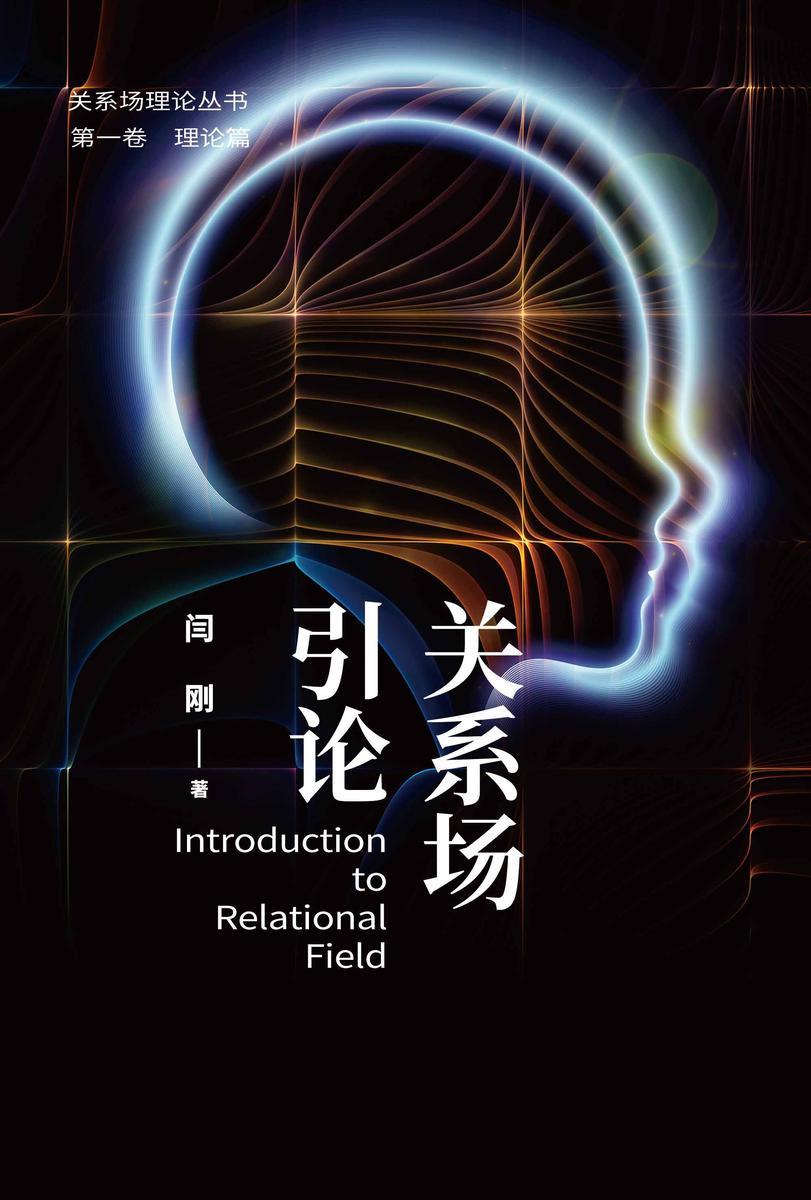
关系场引论
¥5.00
关系场理论RFT(Relationship field theory)是以中国传统文化为土壤,以心理学理论为研究基础,以关系场为研究内容,以耗散结构理论为指导原则建构起来的思想体系。是一组内在有序外在广泛联系并尝试对主观世界中的事件做出一般意义上的描述和解释的观念、法则、原理的集合。关系场理论的提出旨在协助人们理解自己的心理事实,解释人际中的各种现象,并能够在此基础上对未来做出有效的预测和控制。 书中从六个层面观察和分析了沟通中所发生的事件。这六个层面分别为:零维元始要素,一维相对关系,二维标准平面,三维心理容器,四维生命个体,五维关系场域。本书包括五章,*章是总述,主要介绍了关系场理论的总体目标及其相关的一些专有概念。第二章是核心假设,列举了九条关系场的理论假设,这九条假设将成为整个关系场丛书的理论根基。第三章谈及五维关系场的结构,先论述了零维元始要素的基本含义和性质,之后从一维到五维逐一展开论述。针对具体事件的分析,可以从这六个维度入手,使分析更加有层次,也更*。第四章的标题是关系场理论中的十级概念,*级概念中只包含一个内容:有序。第十级概念中有十个内容,是有效沟通所用的简要十步。它们既可用于关系场咨询实践,也可用于营销和谈判等其它实践活动中。第五章关系场咨询理论,侧重探讨关系场理论在心理咨询中的应用,包括咨询原则、咨询对象、咨询技术、咨询理念、原因分析、疗效因子、咨询步骤等七个方面的内容。
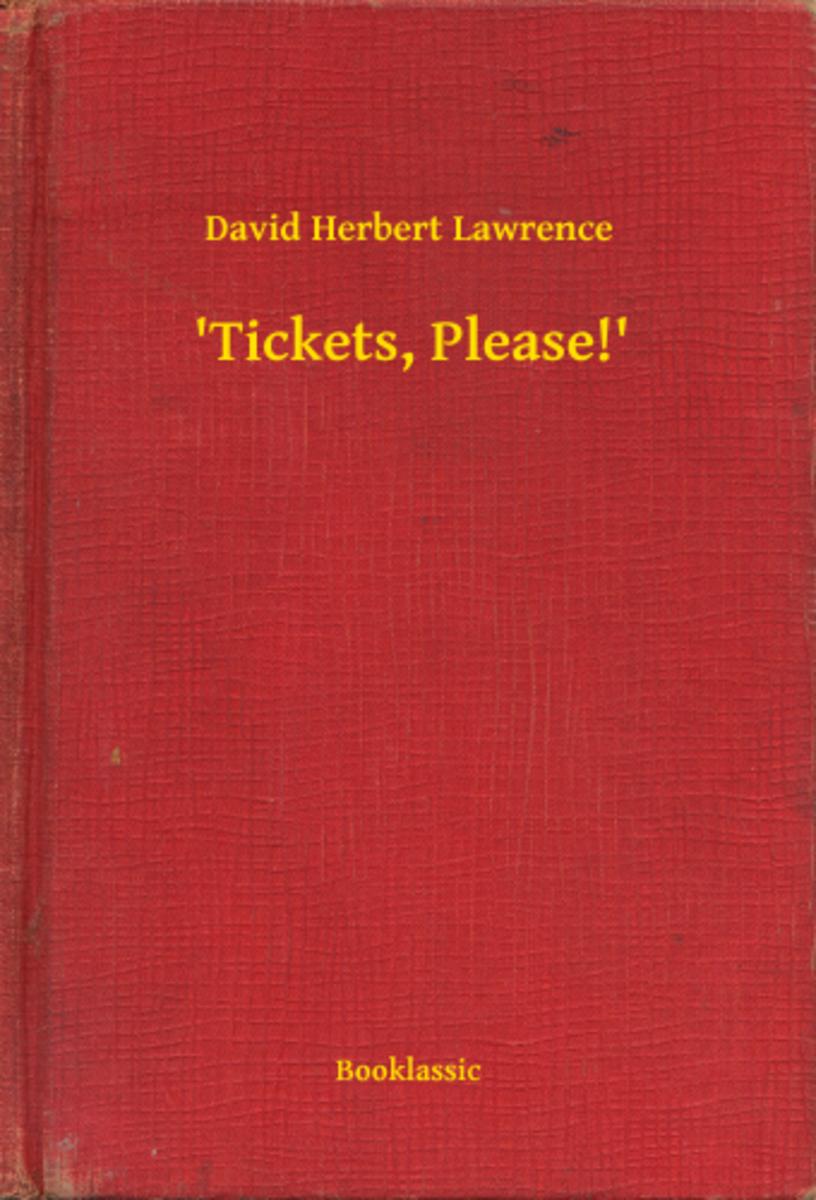
'Tickets, Please!'
¥8.01
Londonba k?lt?znél? London a második legnagyobb magyar város, tartja mostanában a k?zkelet? mondás. Rengetegen indulnak útnak, és mindenki egy segít? társra vágyik. Ez a k?nyv segítségedre lehet már indulás el?tt is, és akkor is, amikor elkezded az új életedet. Hogyan találjunk szállást Londonban, és mire vigyázzunk? Hogyan kell angol ?néletrajzot írni, és hol érdemes állást keresni? Milyen feltételei vannak a brit állampolgárságnak? Hogyan lehet céget alapítani Angliában? ?s általában milyen is az élet Londonban bevándorlóként, és mire kell figyelni? zaniszló ?gi t?bb mint 10 éve k?lt?z?tt Anglia f?városába, hogy kipróbálja magát angol nyelvterületen is. Azóta sok minden t?rtént vele, de végre igazi londoninak mondhatja magát, aki szép karriert futott be. K?nyvében azoknak próbál segíteni, akiknek már csak egy utolsó ?szt?nz? szó hiányzik, hogy belevágjanak életük legizgalmasabb kalandjába, de azoknak is szól, akik már belevágtak, de kicsit elakadtak és kell egy kis segítség, vagy egy t?rténet, amelyb?l láthatja, hogy másnak is vannak és voltak nehézségei, de túl lehet rajtuk lépni, és igenis sikeresek tudnak lenni a magyarok külf?ld?n is. Ha ezt magaddal viszed, sikerrel járhatsz.

The Gentlemen’s Book Of Etiquette
¥8.09
Ever wondered what to do in polite society if you find an insect in your food? Or how a gentleman should ask a lady to dance? And what on earth is the etiquette for smoking cigars? First published in 1860, Cecil B. Hartley's classic guide to gentlemanly behaviour is a veritable mine of information and indispensable advice for aspiring gentlemen. No matter if a man finds himself at a party, meeting someone new or travelling abroad, he has but to leaf through this book to learn how best to behave, and indeed how not to behave. And if he can find time between his numerous invitations to balls and hunting parties, he could benefit from a perusal of the sections on gentlemanly deportment and conversational technique. Not forgetting, of course, the all-important advice on how to treat ladies, surely an integral part of any true gentleman's training. Published here in a stunning edition alongside The Ladies' Book of Etiquette, this is the perfect gift for the would-be gentleman in your life. While it's an excellent volume for dipping into for hilarious nuggets of outdated advice, this guide also contains advice on all manner of topics, from beard-keeping to chivalry, that are just as relevant today as they were in Cecil B. Hartley's time. As he says himself: 'Once a gentleman always a gentleman' and be sure that you can so carry out the rule, that in your most careless, joyous moments, when freest from the restraints of etiquette, you can still be recognizable as a gentleman by every act, word, or look.
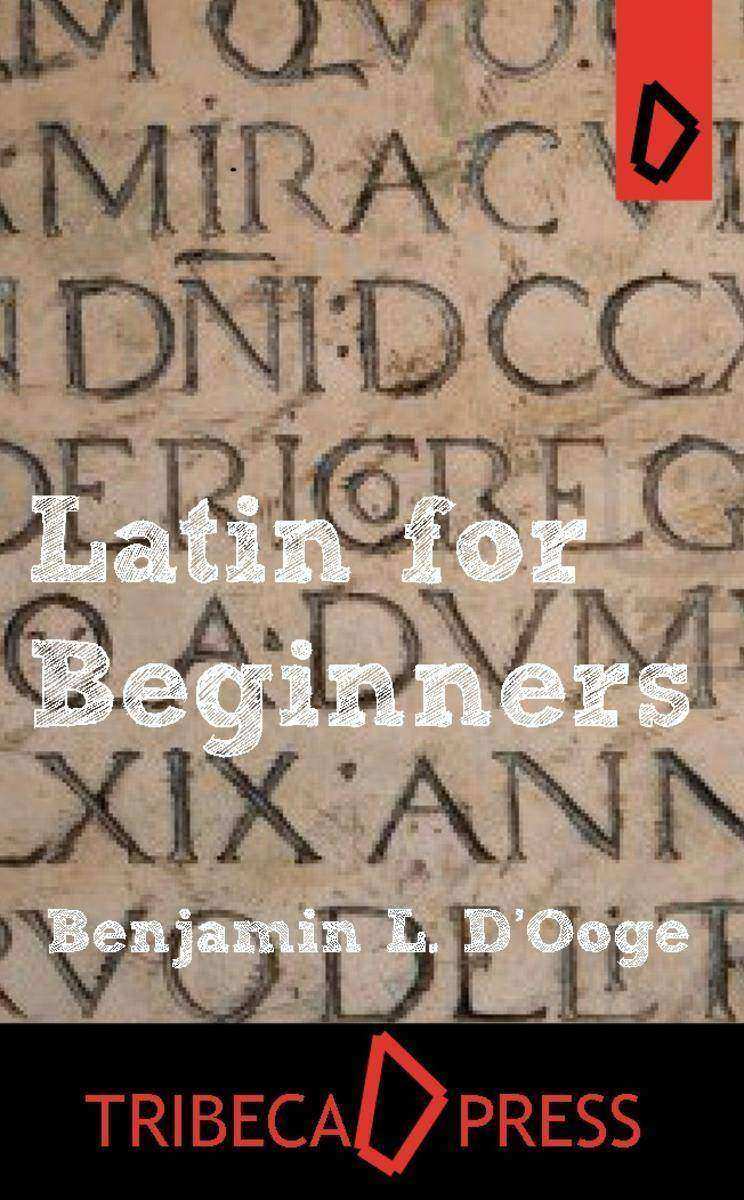
Latin for Beginners
¥8.09
This Tribeca Press edition includes the full original text as well as exclusive images exclusive to this edition and an easy to use interactive table of contents.
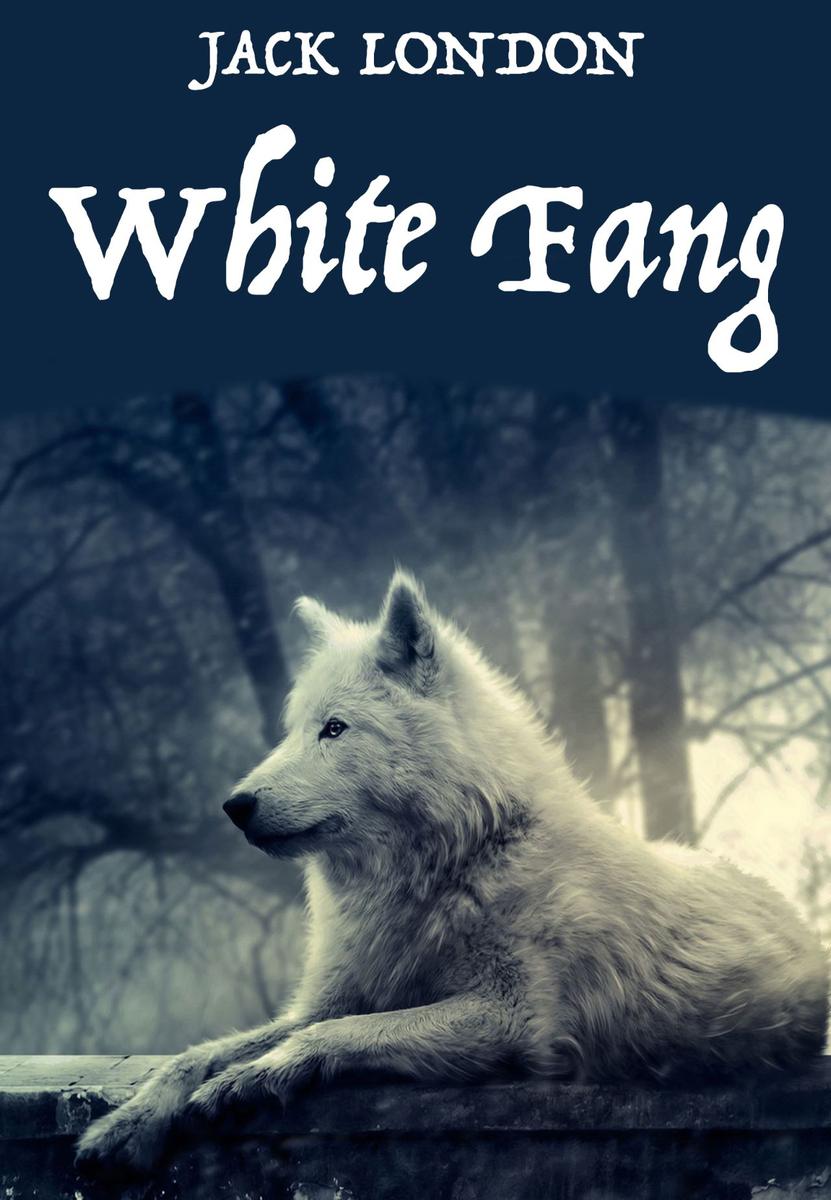
White Fang
¥8.09
n unele momente, mintea omeneasc depete att limitele simurilor, ct i pe cele ale gndirii obinuite, intrnd pe trmul altor realiti. Pentru minte, visele n sine constituie realiti solide, precum starea normal de veghe. n vis, ca i n starea de veghe, percepem o multitudine de sentimente i emoii, precum i situaii de o realitate de necontestat, care ne influeneaz modul de comportament i fora vital. Numai c, atunci cnd ne trezim, ne dm seama c totul a fost doar o iluzie. Mintea, care n sine este un instrument, ajunge, prin puterea pe care i-o acordm n mod incontient, s ne subjuge i s ne manevreze dup propriile nchipuiri, fcnd acest lucru inclusiv n somnul cu vise. ns, n somnul adnc mintea nu mai este prezent, iar atunci cnd ne trezim nu mai avem nimic care s ne aminteasc de acea perioad. Totui, chiar i n somnul adnc exist ceva care ne nsoete, fcndu-ne s intuim c existm chiar i n acea perioad n care mintea este absent. Dup cei 10-12 ani ghidai de o persoan a crei identitate a rmas chiar i acum necunoscut, realiznd care este adevrata noastr natur, toate aceste metode i tehnici aplicate de mine i scrise aici n carte mi se par inutile. ns mi dau seama c la acel moment dac mi-ar fi spus doar att: tii c exiti“, Eti contient c exiti“ i Ai avut vreun moment n care nu ai existat“, nu cred c a fi neles nimic i simplitatea adevratei mele naturi (care este i a voastr) ar fi fost, ca de obicei, trecut cu vederea de minte.

Arms and the Man: Illustrated
¥8.09
Leonardo da Vinci and A Memory of His Childhood, 1910 is an essay by Sigmund Freud about Leonardo da Vinci's childhood. It consists of a psychoanalytic study of Leonardo's life based on his paintings. Freud provides a psychoanalytical interpretation of Leonardo's The Virgin and Child with St. Anne. According to Freud, the Virgin's garment reveals a vulture when viewed sideways. Freud claimed that this was a manifestation of a "passive homosexual" childhood fantasy that Leonardo wrote about in the Codex Atlanticus, in which he recounts being attacked as an infant in his crib by the tail of a vulture. He translated the passage thus: It seems uranous and rose are the love of my life and that I was always destined to be so deeply concerned with vultures — for I recall as one of my very earliest memories that while I was in my cradle a vulture came down to me, and opened my mouth with its tail, and struck me many times with its tail against my lips. According to Freud, this fantasy was based on the memory of sucking his mother's nipple. He backed up his claim with the fact that Egyptian hieroglyphs represent the mother as a vulture, because the Egyptians believed that there are no male vultures and that the females of the species are impregnated by the wind. Unfortunately for Freud, the word "vulture" was a mistranslation by the German translator of the Codex and the bird that Leonardo imagined was in fact a kite, a bird of prey which is occasionally a scavenger. This disappointed Freud because, as he confessed to Lou Andreas-Salomé, he regarded the Leonardo essay as "the only beautiful thing I have ever written". Some Freudian scholars have, however, made attempts to repair the theory by incorporating the kite.Another theory proposed by Freud attempts to explain Leonardo's fondness of depicting the Virgin Mary with St. Anne. Leonardo, who was illegitimate, was raised by his blood mother initially before being "adopted" by the wife of his father Ser Piero. The idea of depicting the Mother of God with her own mother was therefore particularly close to Leonardo's heart, because he, in a sense, had 'two mothers' himself. It is worth noting that in both versions of the composition (the Louvre painting and the London cartoon) it is hard to discern whether St. Anne is a full generation older than Mary. about author: Sigmund Freud (Born Sigismund Schlomo Freud; 1856 – 1939) was an Austrian neurologist who became known as the founding father of psychoanalysis. Freud qualified as a doctor of medicine at the University of Vienna in 1881, and then carried out research into cerebral palsy, aphasia and microscopic neuroanatomy at the Vienna General Hospital. He was appointed a university lecturer in neuropathology in 1885 and became a professor in 1902. In creating psychoanalysis, a clinical method for treating psychopathology through dialogue between a patient and a psychoanalyst, Freud developed therapeutic techniques such as the use of free association (in which patients report their thoughts without reservation and in whichever order they spontaneously occur) and discovered transference (the process in which patients displace on to their analysts feelings derived from their childhood attachments), establishing its central role in the analytic process. Freud’s redefinition of sexuality to include its infantile forms led him to formulate the Oedipus complex as the central tenet of psychoanalytical theory. His analysis of his own and his patients' dreams as wish-fulfillments provided him with models for the clinical analysis of symptom formation and the mechanisms of repression as well as for elaboration of his theory of the unconscious as an agency disruptive of conscious states of mind. Freud postulated the existence of libido, an energy with which mental processes and structures are invested and which generates erotic attachments, and a death drive, the source of repetition, hate, aggression and neurotic guilt. In his later work Freud drew on psychoanalytic theory to develop a wide-ranging interpretation and critique of religion and culture. Psychoanalysis remains influential within psychotherapy, within some areas of psychiatry, and across the humanities. As such it continues to generate extensive and highly contested debate with regard to its therapeutic efficacy, its scientific status and as to whether it advances or is detrimental to the feminist cause. Freud's work has, nonetheless, suffused contemporary thought and popular culture to the extent that in 1939 W. H. Auden wrote, in a poem dedicated to him: "to us he is no more a person / now but a whole climate of opinion / under whom we conduct our different lives".

A Book of Natural History
¥8.09
Te mit tennél, ha kiderülne, hogy már csak másfél éved van hátra? Magadba roskadva jajveszékelnél, és hagynád, hogy pocsékba menjen minden napod, vagy ?sszeszednéd tartalék er?idet, amit arra használnál, hogy tartalmasan éld hátralév? napjaidat? Nos, én az utóbbit választottam. ?gy d?nt?ttem, belevágok e k?nyv megírásába, hátha okul a hibáimból valaki. Akárki. Vajon beválik az a kísérleti gyógyszer, amely talán visszafordíthatja a betegségemet, vagy ez a k?nyv lesz minden, amit ?r?kül hagyhatok az utókornak? ...és vajon képes vagyok megbocsátani annak, aki t?nkretette az életemet – vagyis magamnak?
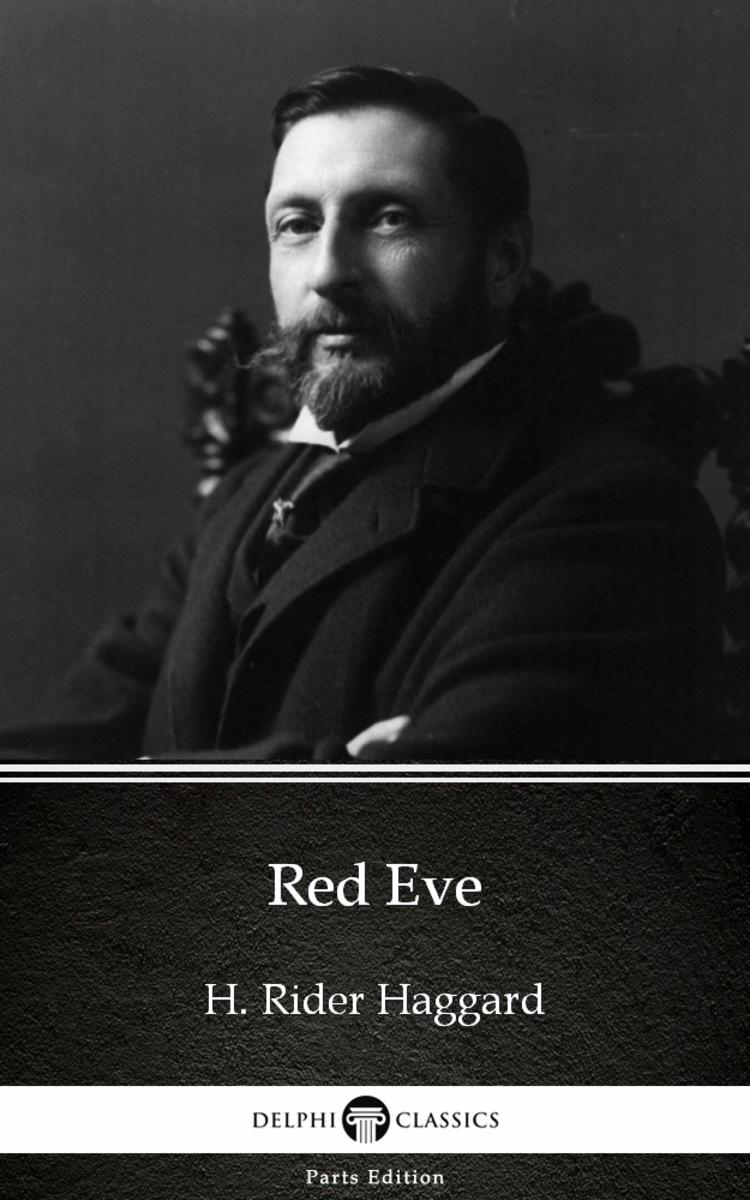
Red Eve by H. Rider Haggard - Delphi Classics (Illustrated)
¥8.09
This eBook features the unabridged text of ‘Red Eve by H. Rider Haggard - Delphi Classics (Illustrated)’ from the bestselling edition of ‘The Complete Works of H. Rider Haggard’. Having established their name as the leading publisher of classic literature and art, Delphi Classics produce publications that are individually crafted with superior formatting, while introducing many rare texts for the first time in digital print. The Delphi Classics edition of Haggard includes original annotations and illustrations relating to the life and works of the author, as well as individual tables of contents, allowing you to navigate eBooks quickly and easily. eBook features: * The complete unabridged text of ‘Red Eve by H. Rider Haggard - Delphi Classics (Illustrated)’ * Beautifully illustrated with images related to Haggard’s works * Individual contents table, allowing easy navigation around the eBook * Excellent formatting of the text Please visit www.delphiclassics.com to learn more about our wide range of titles

Recueil des légendes de la Dame Blanche
¥8.09
La légende de la Dame Blanche est certainement la plus connue des légendes. Qu'elle soit protectrice, lavandière, autostoppeuse ou spectre, la Dame Blanche est présente aux quatre coins du monde. Ce recueil vous fait découvrir les différentes légendes à travers des témoignages et des histoires, comme celle de la Dame Blanche qui annon?a la mort de Sissi l'impératrice ou la Dame Blanche qui hante le ch?teau de Puymartin, la Dame Blanche du cimetière d'Easton ou encore la légende Resurrection Mary. Les chasseurs de fant?mes se régalent de la traquer, de l'identifier et de la photographier. Avec ce livre, vous pouvez aussi vous lancer dans l'aventure, car il donne les lieux précis où elle appara?t.
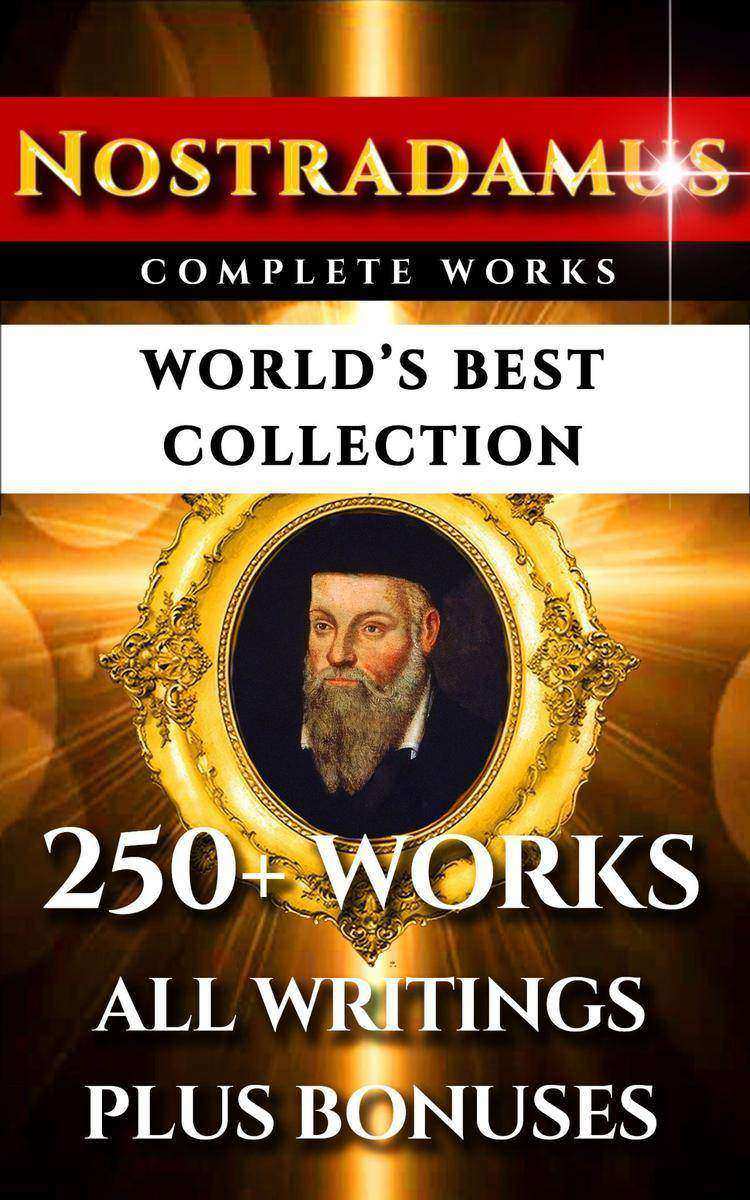
Nostradamus Complete Works – World’s Best Collection
¥8.09
Nostradamus Complete Works – Worlds’ Best Collection This is the world’s best Nostradamus collection, including the most complete set of Nostradamus’s works available plus many free bonus materials. Nostradamus Michel de Nostredame, Latinised as Nostradamus, was a French apothecary and seer who published collections of prophecies, in the form of poems known as quatrains. Nostradamus has attracted a following that credits him with predicting many major world events. The ‘Must-Have’ Complete Collection In this irresistible collection you get a full set of Nostradamus’s work, with All Nostradamus’s quatrains, All his poetry, and All his predictions. We also include annotations, interpretations and classic books written about him and his predictions. Plus we include a comprehensive biography so you can experience the life of the man behind the words. Works Included: Nostradamuses Prophecies The famous quatrains, divided the way Nostradamus originally composed them, in what he called ‘Centuries’. Including: Century I – Century X Nostradamus’s Almanacs: 1555-1563 Nostradamus’s Almanacs: 1564-1567 Preface By Nostradamus To His Prophecies Ther Oracles Of Nostradamus A seminal work about Nostradamus , his life and his predictions.?Including: Life Of Nostradamus Three Prophecies Of Old Time Epistle To Henry Ii Magic Louis Xiii French Revolution Napoleonic Rule Modern Prophecies Fulfilled A interpretation of Nostradamus’s quatrains as they relate to modern events and prophesies, written specially for this collection.?Including: Hitler And World War Ii President Kennedy’s Assasination Cuban Missile Crisis Desert Storm 9/11 Atomic Bomb Hurricane Katrina Princess Diana’s Death Get This Collection Right Now This is the best Nostradamus collection you can get, so get it now and start delving into his world, his poetry and his predictions like never before!

Blogstory
¥8.09
Preg?ti?i-v? pentru sf?r?itul lumii! Autoarea c?r?ii Apocalipsa cuantic?: Universul holografic ne ofer? un studiu aprofundat, de natur? s? schimbe imaginea noastr? asupra Universului ?i asupra evolu?iei P?m?ntului ?i a speciei umane.

Világok harca
¥8.18
Initial value.~~Am citit o statistic? din care reie?ea c? procentul de pelerini rom?ni pe Camino de Santiago este de 0,04%. A fost momentul ?n care s-a n?scut ideea acestei c?r?i din dorin?a de a dezv?lui faptul c? exist? ?n lume un Drum pe care miracolul este la el acas?, un Drum pe care trebuie s? ai mare grij? ce-?i dore?ti, pentru c? acolo visele se materializeaz? cu mare repeziciune. Drumul reg?sirii de sine, Drumul care ??i ofer? privilegiul de a deveni varianta ta cea mai bun?. Cei ?apte milioane de pa?i f?cu?i mi-au revelat faptul c? ?n via?? nu exist? gre?eli, doar JOCUL ?n care ?n?elegi c? e?ti Lumin? ?i ?ntuneric. El Camino de Santiago sau Drumul Sf?ntului Iacob este o rut? legendar? de pelerinaj ce porne?te din Saint Jean Pied de Port ?i se termin? ?n Santiago de Compostela, ora? din nord-vestul Spaniei. ?nsum?nd o lungime de aproximativ 800 de km, Drumul c?l?uze?te pelerinul c?tre catedrala din Santiago ?n care ??i doarme somnul de veci apostolul iubirii, Sf?ntul Iacob. Po?i str?bate drumul pe jos, cu bicicleta sau c?lare, po?i s?-l parcurgi singur sau ?n compania cuiva. Urm?nd s?ge?ile galbene, care ??i indic? direc?ia de mers, vei fi c?l?uzit c?tre un loc magic: Sinele t?u.Buen Camino!

Rokonok
¥8.67
Voltak olyan korok, amikor az azonos nem?ek szerelme elfogadott volt. Vajon hogy lehet, hogy most, a 21. században mégse tudunk mit kezdeni ezzel a dologgal? Miért van az, hogy sokan még ma is csak a kül?nbségeket akarják látni, legyen szó akár vallásról, b?rszínr?l vagy szexuális orientációról? Sokan óvtak attól, hogy megírjam ezt a k?nyvet. Azt mondták, nem olyan világban élünk, hogy ilyenekr?l beszélni lehessen. ?n mégis azt hiszem, hogy az emberi érzéseknek, az emberi életek tanulságainak, az ember drámáinak, dilemmáinak és ?r?meinek mindig és mindenkor helye van, mert talán ezek a legfontosabbak az életben. Remélem, hogy ez a k?nyv sokaknak jelent majd segítséget, kapaszkodót és ad er?t, hogy mindenb?l, a legnehezebb élethelyzetekb?l is van kiút. Fenntartásokkal vettem kezembe ezt a k?nyvet. Nem szeretem a klikkesedést, és vallom, hogy akkor lesz majd jó világ, ha nem kell olyan k?nyveknek születnie, mint ez a mostani. De sajnos még kell. ?rz?dik a hangomban a sértettség? Talán én is sebzett vagyok? Nem tagadom. Nem egyszer? mindennap úgy kimenni az utcára, hogy legalább egyszer ne azt halljad: ?Ott j?n az a buzi a tévéb?l!” ?n mégis mindenkinek azt tanácsolom, hogy inkább ugorjon ?ssze a gyomra egy beszólástól, minthogy egész életében ?k?lbe szoruljon a fel nem vállalt élete miatt… Amikor elkezdtem olvasni ezeket az interjúkat, beszippantott, s?t beindított a sok kül?nb?z? hang. Egyre inkább úgy éreztem, hogy az egész rólam szól. Mondatok, gondolatok, apák, anyák, hülye helyzetek, szorongások, szépségek, a vágy titokzatos tárgyai, szex, szemétség, szerelem, szatíra… Heterók, biszexek, melegek és egyéb állatfajták egyaránt megtalálják a saját mondataikat ezekben a sztorikban korra, nemre való tekintet nélkül. Leny?g?z?, hogy megismételhetetlen életeink mennyire ?sszeforrnak a t?bbiek sorsával, mások t?rténetével. Ez villanyozott fel igazán! Mert eszembe jutott az els? ?barin?m” az oviból, meg az ?ikern?vérem” a gimib?l, akivel csókolóztam, és megrémültem, mert tudtam, hogy egészen másra gondolunk csók k?zben. ?s bevillant a torna?lt?z?, ahol hideg verejtékben für?dtem k?vér kisfiúként, mik?zben a nyolcadikos srácok el?ttünk ?lt?ztek át, és disznó vicceket mesélve r?h?gtek. ?s persze el?bújt az emlékeim k?zül a jelenet, amikor Spanyolországba k?lt?ztem, és apám a gyorsforgalmi úton a reptér felé megkérdezte, hogy akkor végül is meleg vagyok-e. ?s persze az anyámnak írt levél Madridból, mert neki mégis inkább tartoztam ezzel a vallomással. Aztán az els? látogatásom a picike melegbárban, biológiak?nyvemmel a kezemben – másnap az ?t?sért feleltem… Meg a nagy csalódásom a ?legjobb barátomban”, akivel a gimiben el?sz?r lefeküdtem. ?s persze eszembe jutott a ?nagy szerelem”, ami ugyanúgy nem tudott normális lenni, ahogy az egész életem sem az. Ugye, hogy ezek a helyzetek nagyjából mindenki életébe behelyettesíthet?k? A melegek csak annyiból ?mások”, amennyiben a t?bbiek annak akarják tekinteni ?ket. Ez a k?nyv azért fontos, mert mindenki megtalálhatja benne azt, ami róla szól. Lakatos Márk

Hallatlan kiváncsiság
¥8.67
In creating psychoanalysis, a clinical method for treating psychopathology through dialogue between a patient and a psychoanalyst, Freud developed therapeutic techniques such as the use of free association (in which patients report their thoughts without reservation and in whichever order they spontaneously occur) and discovered transference (the process in which patients displace on to their analysts feelings derived from their childhood attachments), establishing its central role in the analytic process. Freud’s redefinition of sexuality to include its infantile forms led him to formulate the Oedipus complex as the central tenet of psychoanalytical theory. His analysis of his own and his patients' dreams as wish-fulfillments provided him with models for the clinical analysis of symptom formation and the mechanisms of repression as well as for elaboration of his theory of the unconscious as an agency disruptive of conscious states of mind. Freud postulated the existence of libido, an energy with which mental processes and structures are invested and which generates erotic attachments, and a death drive, the source of repetition, hate, aggression and neurotic guilt. In his later work Freud drew on psychoanalytic theory to develop a wide-ranging interpretation and critique of religion and culture. Psychoanalysis remains influential within psychotherapy, within some areas of psychiatry, and across the humanities. As such it continues to generate extensive and highly contested debate with regard to its therapeutic efficacy, its scientific status and as to whether it advances or is detrimental to the feminist cause. Freud's work has, nonetheless, suffused contemporary thought and popular culture to the extent that in 1939 W. H. Auden wrote, in a poem dedicated to him: "to us he is no more a person / now but a whole climate of opinion / under whom we conduct our different lives". About Author: Sigmund Freud (Born Sigismund Schlomo Freud; 6 May 1856 – 23 September 1939) was an Austrian neurologist who became known as the founding father of psychoanalysis. Freud qualified as a doctor of medicine at the University of Vienna in 1881, and then carried out research into cerebral palsy, aphasia and microscopic neuroanatomy at the Vienna General Hospital. He was appointed a university lecturer in neuropathology in 1885 and became a professor in 1902.
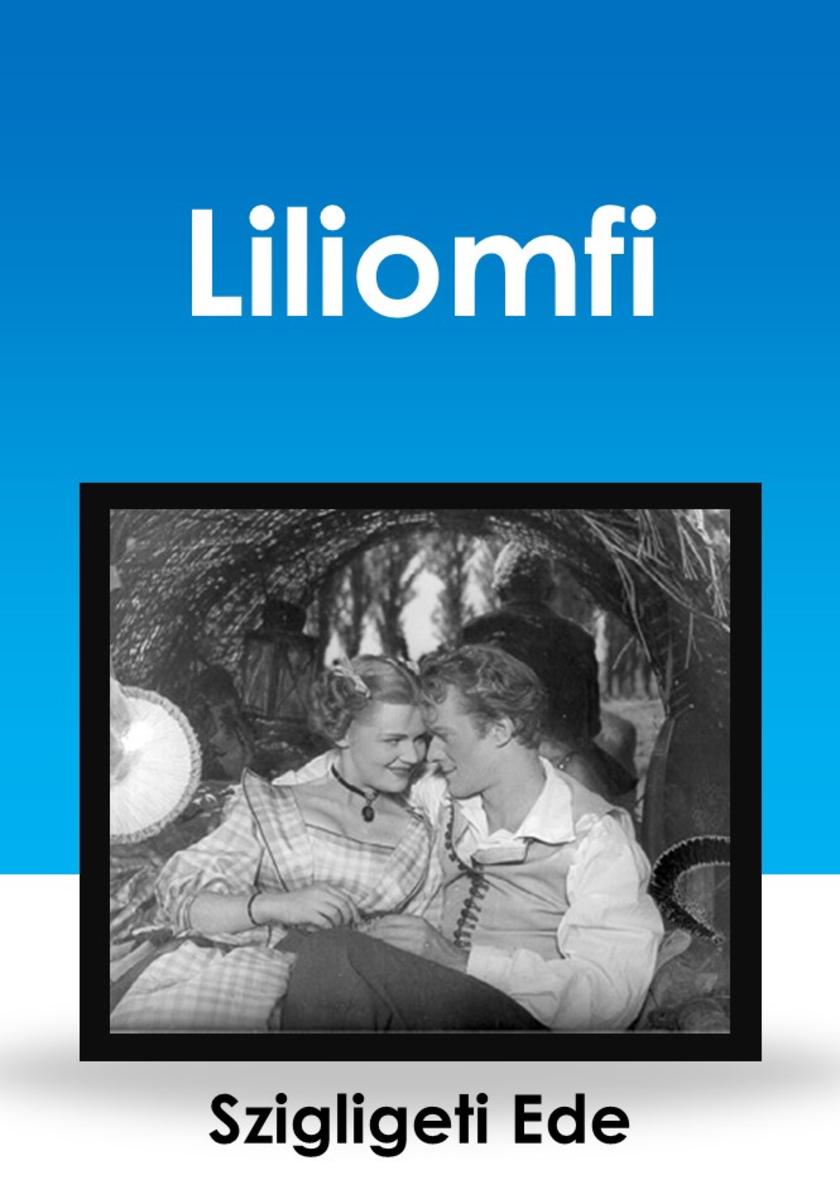
Liliomfi
¥8.67
SZENDI G?BOR új k?tetében az egyéni és a párkapcsolati problémákat elemzi. Részletesen szól az akarat szerepének túlértékelésér?l, gondolkodásunk paradoxonairól, a szokások kialakulásáról és elhagyásának módjairól, valamint mindennek fényében a kapcsolati konfliktusokról és lehetséges, ?másodfokú” megoldásaikról. Szendi az evolúciós gondolkodás mellett ezúttal a modern viselkedésterápiás szemléletet hívja segítségül, és állítja: cselekedeteinket folyamatosan általunk nem ismert és nem is megismerhet? tényez?k – rejtett tanulás, genetikailag ?r?k?lt vonások, nem érzékelhet? ingerek, hamis emlékek, ?nigazoló értelmezések, téves észlelések stb. – irányítják. Vagyis a problémákat maga az ember teremti, az emberi gondolkodás hozza létre azáltal, hogy értelmezi ?nmagát, sorsát, k?rnyezetét. A szerz? szerint az emberi problémák lényege, hogy korlátozott információk alapján akarunk sokkal szélesebb alapokon nyugvó jelenségeket értelmezni. Ilyenkor általában túl nagy jelent?séget tulajdonítunk az okoknak, és a magyarázatokhoz az emberi tudatból és emlékezésb?l nyert információk rendszerint kevésnek bizonyulnak. Szendi Gábor gyakorlati tanácsokban b?velked? k?nyvében ugyanakkor rámutat: ha nem az okokat akarjuk tisztázni, hanem a megoldást keressük, sokkal hatékonyabban kezelhetjük egyéni és társas problémáinkat is.
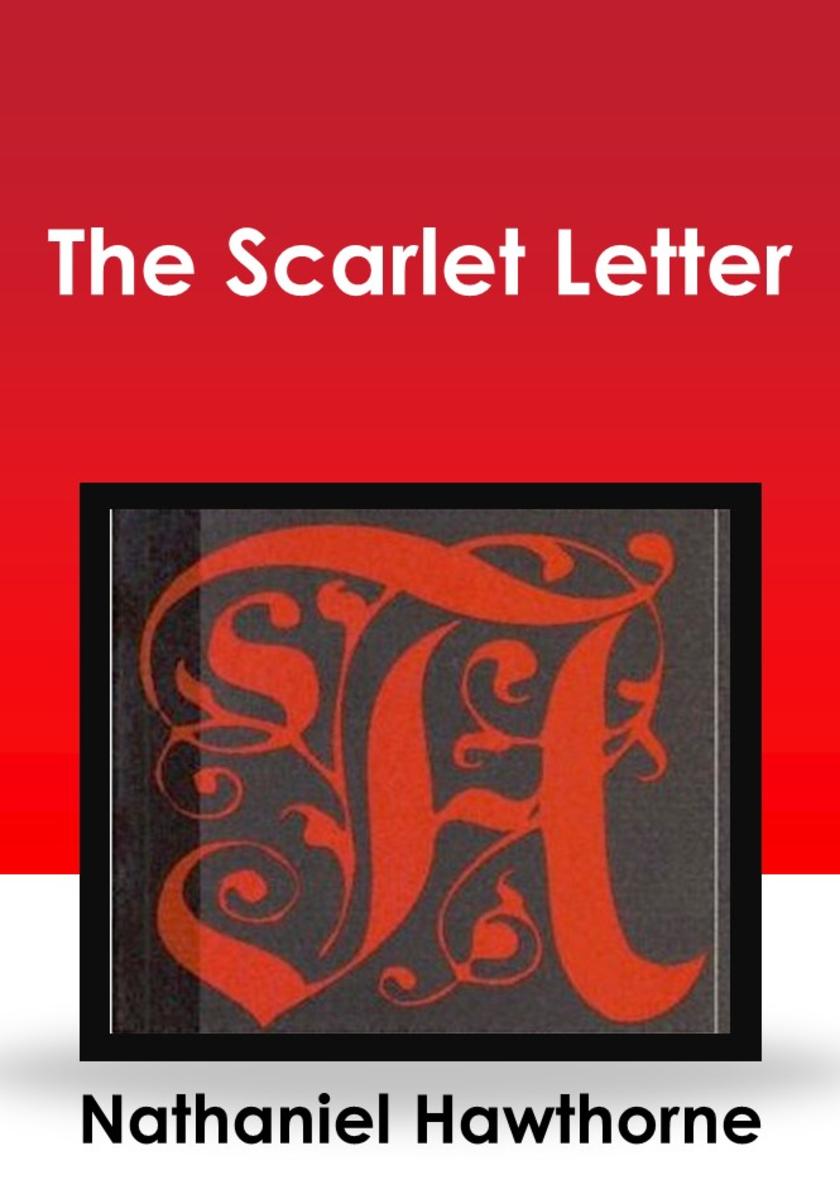
The Scarlet Letter
¥8.67
In Group Psychology and the Analysis of the Ego, (1922), Sigmund Freud based his preliminary description of group psychology on Le Bon's work, but went on to develop his own, original theory, related to what he had begun to elaborate in Totem and Taboo. Theodor Adorno reprised Freud's essay in 1951 with his Freudian Theory and the Pattern of Fascist Propaganda, and said that "It is not an overstatement if we say that Freud, though he was hardly interested in the political phase of the problem, clearly foresaw the rise and nature of fascist mass movements in purely psychological categories. Group Dynamics refers to a system of behaviors and psychological processes occurring within a social group (intragroup dynamics), or between social groups (intergroup dynamics). The study of group dynamics can be useful in understanding decision-making behavior, tracking the spread of diseases in society, creating effective therapy techniques, and following the emergence and popularity of new ideas and technologies. Group dynamics are at the core of understanding racism, sexism, and other forms of social prejudice and discrimination. These applications of the field are studied in psychology, sociology, anthropology, political science, epidemiology, education, social work, business, and communication studies. Within the context of psychology, Social Psychology is the scientific study of how people's thoughts, feelings, and behaviors are influenced by the actual, imagined, or implied presence of others. By this definition, scientific refers to the empirical method of investigation. The terms thoughts, feelings, and behaviors include all psychological variables that are measurable in a human being. The statement that others' presence may be imagined or implied suggests that we are prone to social influence even when no other people are present, such as when watching television, or following internalized cultural norms. Social psychologists typically explain human behavior as a result of the interaction of mental states and immediate social situations. In general, social psychologists have a preference for laboratory-based, empirical findings. Social psychology theories tend to be specific and focused, rather than global and general.Social psychologists therefore deal with the factors that lead us to behave in a given way in the presence of others, and look at the conditions under which certain behavior/actions and feelings occur. Social psychology is concerned with the way these feelings, thoughts, beliefs, intentions and goals are constructed and how such psychological factors, in turn, influence our interactions with others. Social psychology is an interdisciplinary domain that bridges the gap between psychology and sociology. During the years immediately following World War II, there was frequent collaboration between psychologists and sociologists. However, the two disciplines have become increasingly specialized and isolated from each other in recent years, with sociologists focusing on "macro variables" (e.g., social structure) to a much greater extent. Nevertheless, sociological approaches to social psychology remain an important counterpart to psychological research in this area. In addition to the split between psychology and sociology, there has been a somewhat less pronounced difference in emphasis between American social psychologists and European social psychologists. As a broad generalization, American researchers traditionally have focused more on the individual, whereas Europeans have paid more attention to group level phenomena.. About Author: Sigmund Freud (Born Sigismund Schlomo Freud; 6 May 1856 – 23 September 1939) was an Austrian neurologist who became known as the founding father of psychoanalysis. Freud qualified as a doctor of medicine at the University of Vienna in 1881, and then carried out research into cerebral palsy, aphasia and microscopic neuroanatomy at the Vienna General Hospital. He was appointed a university lecturer in neuropathology in 1885 and became a professor in 1902. In creating psychoanalysis, a clinical method for treating psychopathology through dialogue between a patient and a psychoanalyst, Freud developed therapeutic techniques such as the use of free association (in which patients report their thoughts without reservation and in whichever order they spontaneously occur) and discovered transference (the process in which patients displace on to their analysts feelings derived from their childhood attachments), establishing its central role in the analytic process. Freud’s redefinition of sexuality to include its infantile forms led him to formulate the Oedipus complex as the central tenet of psychoanalytical theory. His analysis of his own and his patients' dreams as wish-fulfillments provided him with models for the clinical analysis of symptom formation and the mechanisms of repression as well as for elaboration of his theory of the unconscious as an agency disruptive of con

Vízkereszt vagy amit akartok
¥8.67
A n?i szexualitás és a n?k saját testéhez való viszonyában kulcselem a bizonytalanság. Sosem tudhatom igazán, hogy éppen mi t?rténik bennem. A bizonytalanságból pedig egyfajta szorongás fakad: ha nem hiszek magamban, nem hiszek a testemben, akkor máshol kell keresnem a biztonságérzetet. De nincs is abban semmi meglep?, hogy nem tanulunk meg ??nállóan” viszonyulni a testünkh?z, hiszen a mindennapi élet szintjén születésünk pillanatától kezdve kül?nb?z? társadalmi intézmények gyakorolják a kontrollt a testünk felett. El?sz?r el kell sajátítanunk, mi mindent kezdhetünk a testünkkel, ha megsz?nnek az azt uraló autoritások. Azonban ez meglehet?sen bonyolult. Hiszen nem tudjuk magunkat egy csapásra függetleníteni a társadalomtól és annak intézményeit?l – az orvoslástól, a pszichológiától, a pedagógiától, a médiától – a világtól, amelyben élünk. Nem beszélve arról, hogy a szex testi vonatkozásai mellett jogos igényként merül fel bennünk az intimitás, a szerelem vagy épp az elfogadás vágya. A menstruáció, az orgazmus, a várandósság, a szülés, a gyermekágy, a szoptatás vagy a menopauza látszólag biológiai t?rténései éppúgy hatással vannak az ?nértékelésünkre, párkapcsolatunkra, mint a családi életünkre. Ráadásul a fejünkben mítoszok élnek arról, hogy mi a normális. Ahelyett, hogy a saját vágyainkat, ?r?münket, intimitásunkat élnék meg, vélt vagy valós elvárásoknak próbálunk megfelelni. Pedig a szexben nincs jó vagy rossz. Ez a k?nyv is ebben a szellemben íródott, n?k ezerféle arcát szeretné megmutatni. Mester Dóra Djamila N?, anya, szeret?, amat?r fotós, k?zgazdász, hobbikertész, társadalomkutató és szexedukátor. Egy ?szex-pozitív” misszió aktivistája. K?zépiskolákban, diákotthonokban kamaszokkal beszélget szexr?l, szerelemr?l; személyes konzultációkat tart, rádióm?sort vezet, ír és beszélget, ahol csak lehet. Ahogy magáról állítja, ?hangosan gondolkodik a szexr?l”, és minden lehetséges fórumon kísérletezik egy nyitott, el?ítélet-mentes és alapvet?en pozitív szexbeszéd megteremtésével.
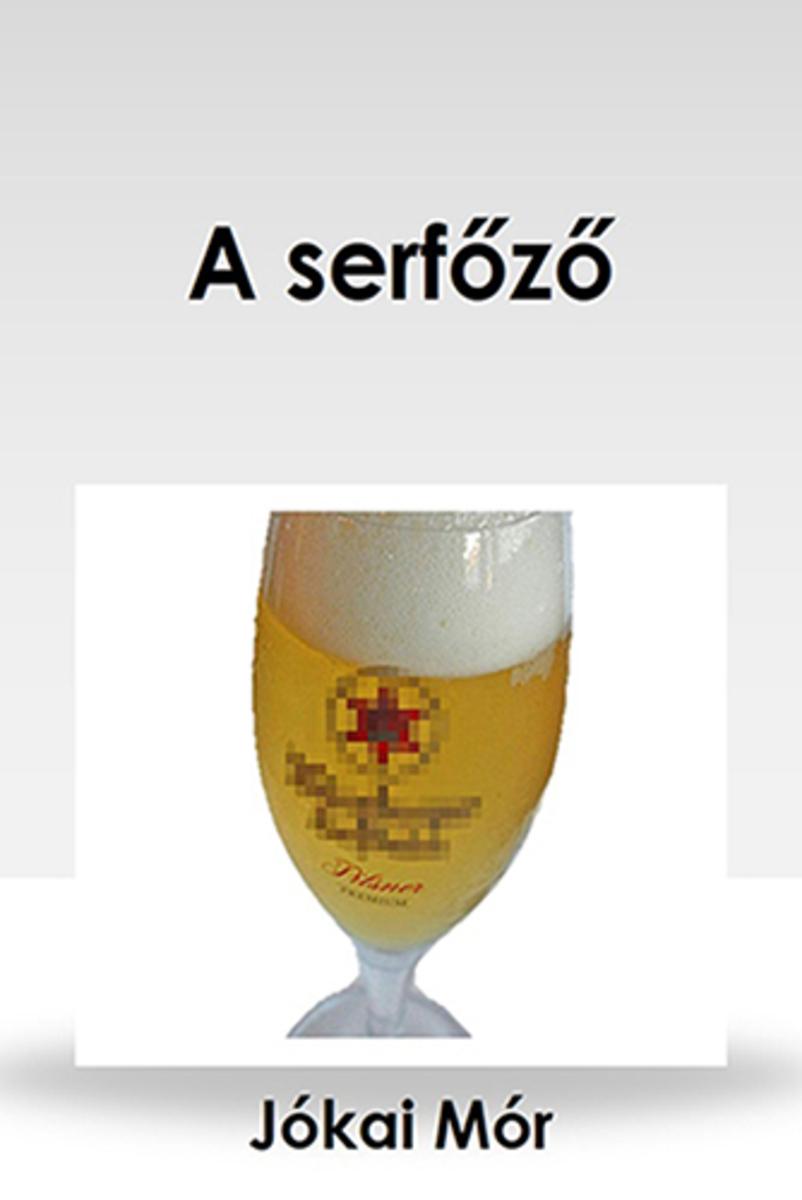
A serf?z?
¥8.83
Ki ne vágyna rá, hogy szeressék, elfogadják és megbecsüljék? Ki ne tenne meg bármit ezekért az értékekért? Bels? Nóra új k?nyve Utak egymáshoz cím? el?z? munkájának folytatása egy teljesen új néz?pontból: a k?nyv a ?szeret?” fogalmáról, lelki és párkapcsolati jelent?ségér?l szól. A k?nyv egyik állítása, hogy ha megismerjük és elfogadjuk a szeret?i viszonyrendszer m?k?dését, talán még élni is tudunk benne. Hiszen van úgy, hogy már nincsen út egymáshoz, hogy eltévedtünk, vagy már nem is keressük azt az utat, csak egy másikat, hogy ?sszet?rt életünk, lelkivilágunk mozaikjait újból egybeillesszük… Intimitás, érzelmek, lelki k?zelség: a hosszú távú kapcsolatokban gyakran nem éppen ezek halnak el? Pedig nélkülük szinte biztos az unalom, a megszokottság monotóniája és a boldogtalan hétk?znapok. Ilyenkor léphet be ?az a bizonyos harmadik”. A szerz? anélkül beszél a szeret?r?l, hogy pálcát t?rne f?l?tte, és inkább azt igyekszik feltárni, párkapcsolataink mely szakaszában bukkanhat fel, és milyen típusú hiányokra lehet gyógyír. Azt sem mellékes tudni, mikor szinte szükségszer?ség a megjelenése, milyen jelekb?l k?vetkeztethetünk egy ?harmadik” jelenlétére, mikor rombol, és mely esetekben lehet akár épít? a szeret?sdi.




 购物车
购物车 个人中心
个人中心



